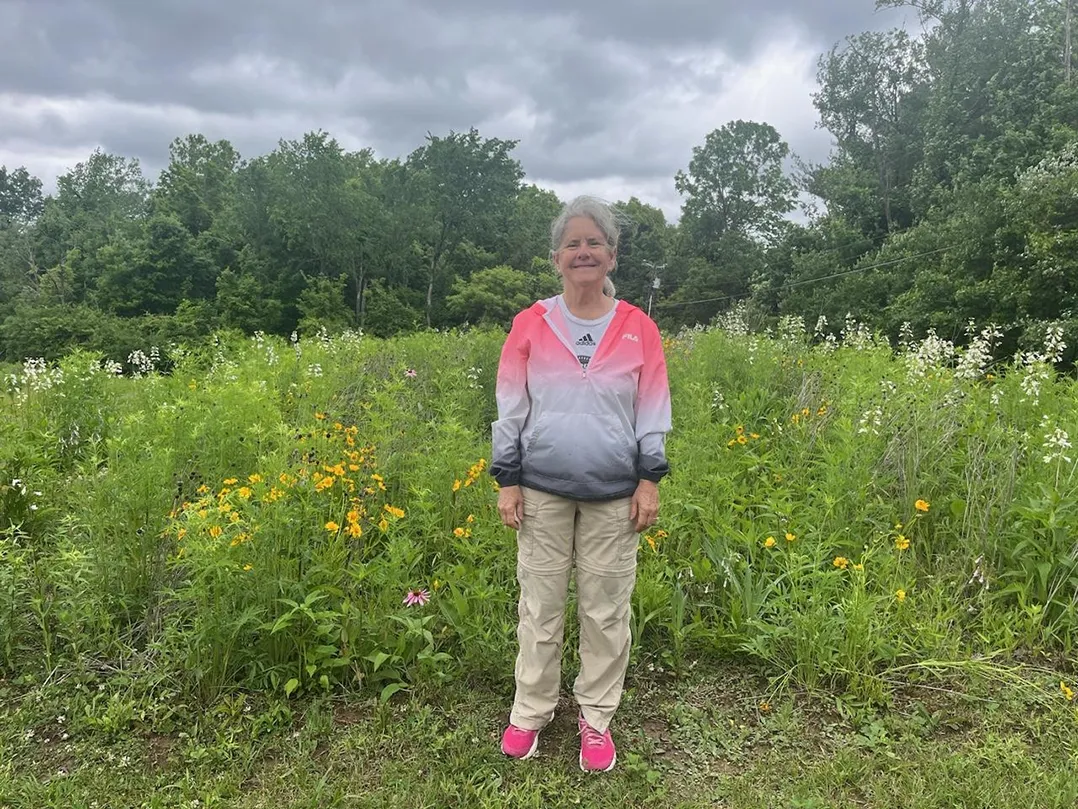Lawrence resident Liz Masur has taken her interest in promoting sustainability and preserving native species to a new level through the monthslong Indiana Master Naturalist Program, offered by the Indiana Department of Natural Resources.
Masur, who is an elected member of the Lawrence Common Council, said she enrolled in the program to learn directly from experts about Indiana’s environment so she could better advocate for sustainability.
Indiana Master Naturalist classes take place at state parks throughout Indiana, and at different times in spring and early summer. This particular program kicked off mid-April, with about 20 participants meeting weekly through late June at Fort Harrison State Park in Lawrence.
Some of the topics included the geological history of Indiana, which was a shallow sea 500 million years ago, and plant and bird identification. Masur noted that Indiana is home to about 430 bird species.
There also were presentations about water quality and how chemicals used for lawns and agriculture in Indiana can flow through creeks and streams to the Mississippi River and eventually affect water quality and fisheries in the Gulf of Mexico.
Masur added that Indiana has lost much of its wetlands, which can naturally filter water and reduce flooding.
The group also learned about amphibians and had a special presentation about whooping and sandhill cranes — the two crane species found in Indiana.
Each participant signed up to complete 24 hours of volunteer work. Masur’s volunteer time focused on removing invasive honeysuckle, which she said was a problem for a wetlands area near her home.
“At least one study has made a connection between a decline in frogs and the presence of invasive honeysuckle,” she said. “Evidently, as bush honeysuckle leaves decompose in water, they release tannin chemicals, and those chemicals are harmful to frogs. This is a possible explanation for why we no longer hear frogs peeping in the spring, as we did when we first moved here.”
Masur said she used a battery-powered saw to cut down honeysuckle and dug up stumps when she could. She said it’s an ongoing process, but consistency will lead to its eradication.
Masur said the program was enjoyable and she particularly liked getting to know Fort Ben Naturalist Emilie Sweet, who Masur said bakes excellent banana bread.
“Another highlight was interacting with the other people in the class who are all passionate about the environment and who are curious about flora and fauna,” she said. “It was fun to be around people who were fascinated, instead of freaked out, when we stumbled across the still-flailing tail of a broad-headed skink on a trail.”
She explained that broad-headed skinks have a defense mechanism that allows them to break off their tails when grabbed by a predator. The tail continues to wiggle, distracting the predator while the skink escapes.
“In this situation, the frightened skink scuttled up the bare leg of one of the participants,” Masur said. “She, concerned about the well-being of the reptile, calmly stood still while I patted her down until I found the skink on her back, carefully cupped it and relocated it into the undergrowth.”
Masur said she hopes that her new certification will bolster her credibility when she advocates for sustainability, whether it’s through her work on the Lawrence Common Council, her HOA board or the community at large.
“The more educated I am about environmental best practices, the better I will be at advocating for the environment,” she said. “And what is better for the environment is, the majority of the time, better for the welfare of people.”
For more about the master naturalist program, visit in.gov/dnr/state-parks/programs/indiana-master-naturalist-program.




